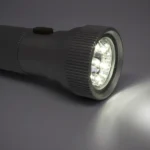
Electrical engineering is a dynamic and ever-evolving field that has significantly shaped modern society. From the creation of early electric motors to the development of advanced supercomputers, electrical engineering encompasses a wide range of innovations that impact our daily lives. This collection of trivia highlights key milestones and breakthroughs in electrical engineering, showcasing the remarkable progress and ingenuity that have driven technological advancements over the years.
First Electric Motor: The earliest electric motor, designed by Scottish inventor Robert Davidson in 1832, was a pioneering step in electrical engineering. Davidson’s motor utilized both permanent magnets and electromagnets to create rotary motion, a fundamental principle that underlies modern electric motors. Despite its simplicity and limited power, this invention demonstrated the potential of electromagnetic principles to generate mechanical movement, paving the way for future developments in electric propulsion systems used in a variety of applications, from household appliances to electric vehicles.
Light Bulb Filament: In 1879, Thomas Edison, who was working in the United States, developed the first successful incandescent light bulb using a filament made of high-resistance carbonized bamboo. This filament could last up to 1,200 hours, a significant improvement over previous designs. Edison’s innovation was not just in the filament but also in creating a practical and long-lasting light bulb that could be mass-produced and sold commercially. This breakthrough led to widespread adoption of electric lighting, fundamentally changing daily life by extending productive hours beyond sunset and contributing to the growth of modern industries.
War of Currents: The War of Currents in the late 1880s was a fierce competition between alternating current (AC) and direct current (DC) electrical systems. Nikola Tesla, backed by George Westinghouse, championed AC, while Thomas Edison promoted DC. AC ultimately won due to its ability to efficiently transmit electricity over long distances with minimal loss, thanks to the use of transformers to step up voltage levels for transmission and step them down for safe use in homes and businesses. This victory led to the widespread adoption of AC power systems, which remain the standard for electrical grids worldwide.
Largest Power Grid: The European Grid is the world’s most extensive interconnected synchronous power grid, encompassing over 35 countries and boasting a total installed capacity exceeding 740 gigawatts (GW). This grid allows for the seamless transfer of electricity across national borders, enhancing energy security, efficiency, and stability across the continent. The integration facilitates the balancing of supply and demand, accommodates renewable energy sources, and supports mutual assistance among countries during power shortages or surpluses, highlighting the importance of international cooperation in energy management.
Smallest Transistor Ever Made: In 2017, IBM researchers achieved a significant milestone in semiconductor technology by creating the world’s smallest transistor, measuring just 7 nanometers (nm) wide. This advancement is crucial for the development of more powerful and efficient microchips, enabling increased performance and reduced power consumption in electronic devices. The miniaturization of transistors is a key factor in the continued progress of Moore’s Law, which predicts the doubling of transistors on a microchip approximately every two years, leading to exponential growth in computing power and capabilities.
Highest Voltage Power Line: The Ekibastuz–Shobrak Line in Kazakhstan holds the record for the highest voltage power line in the world, operating at an astounding 1,150 kilovolts (kV) AC. This high-voltage line is essential for the efficient transmission of electricity over long distances, reducing energy losses and improving the stability of the power supply. High-voltage transmission is critical for meeting the demands of large, geographically dispersed populations and industrial centers, and it plays a pivotal role in the integration of renewable energy sources into the grid.
Longest Undersea Cable: The Algeria-Italy (Medgaz) underwater High-Voltage Direct Current (HVDC) electrical power transmission system, stretching 2,427 kilometers (1,508 miles), is the longest in the world. HVDC technology is used because it is more efficient than AC for long-distance underwater and underground transmission. This system enhances energy security by allowing for the exchange of electricity between countries, facilitating the integration of renewable energy sources, and helping to balance supply and demand across regions. The Medgaz cable represents a significant engineering achievement in overcoming the challenges of underwater power transmission.
First Programmable Computer: The Colossus Mark 1, built by British engineer Tommy Flowers in 1937, was an electronic digital computer designed specifically to break German ciphers during World War II. This groundbreaking machine used a combination of vacuum tubes and switches to perform complex calculations at unprecedented speeds, significantly aiding the Allied code-breaking efforts at Bletchley Park. The Colossus Mark 1 is considered one of the earliest programmable computers and laid the foundation for modern computing, demonstrating the potential of electronic devices to automate and accelerate data processing tasks.
Most Transistors in a Microprocessor: The AMD EPYC 7A53 server processor, released in 2021, boasts a record-breaking 293 billion transistors. This immense number of transistors enables exceptional processing power, making it one of the most advanced and capable microprocessors available. High transistor counts are essential for supporting the increasingly complex and demanding workloads in data centers, artificial intelligence applications, and high-performance computing. The EPYC 7A53 represents a significant leap forward in microprocessor technology, offering enhanced performance, efficiency, and scalability for modern computing needs.
Fastest Supercomputer: Frontier, developed by Cray Inc. and deployed at the Oak Ridge Leadership Computing Facility in the US, achieved a peak performance of 1.5 exaflops (1.5 quintillion floating-point operations per second) in 2022, making it the fastest supercomputer in the world. This supercomputer is designed to handle the most complex scientific and engineering calculations, including simulations of nuclear reactions, climate modeling, and advanced AI research. The exceptional speed and processing power of Frontier enable researchers to tackle problems that were previously unsolvable, pushing the boundaries of what is possible in computational science and technology.
Global Electricity Consumption: In 2021, the world consumed an estimated 27,973 terawatt-hours (TWh) of electricity, according to the International Energy Agency. This massive amount of energy is essential for powering homes, industries, transportation, and digital infrastructure across the globe. The demand for electricity continues to rise due to population growth, urbanization, and increased reliance on electrical devices and technologies. Efficient generation, transmission, and usage of electricity are crucial for meeting this demand while minimizing environmental impact and ensuring sustainable energy development.
Cost of the First Transatlantic Telephone Cable: The first commercially successful transatlantic telephone cable, laid in 1866, cost £1,271,000, which is equivalent to over £1 billion today. This groundbreaking project connected Europe and North America, allowing for instant communication across the Atlantic Ocean. The cable consisted of thousands of miles of insulated copper wire, protected by layers of waterproof material and steel sheathing. Its successful implementation marked a significant milestone in global telecommunications, reducing the time required for information exchange and fostering closer international relations and economic ties.
Electrocution Risk: In the US, around 1,500 deaths occur annually due to unintentional electric shock, underscoring the importance of electrical safety measures. These incidents can result from faulty wiring, improper use of electrical devices, or accidental contact with live electrical components. To mitigate these risks, it is crucial to follow safety guidelines, such as using ground fault circuit interrupters (GFCIs), ensuring proper insulation of wires, and adhering to building codes and standards. Public education and workplace safety protocols are essential for reducing the incidence of electrical accidents and saving lives.
Solar Power Growth: The global solar photovoltaic (PV) capacity has grown exponentially, reaching over 1 terawatt (TW) in 2022, according to the International Renewable Energy Agency. This rapid growth is driven by advances in PV technology, decreasing costs, and supportive government policies. Solar power is a clean, renewable energy source that plays a vital role in reducing greenhouse gas emissions and combating climate change. The expansion of solar capacity contributes to energy security, creates jobs, and provides electricity to remote and underserved areas, highlighting its importance in the global energy transition.
Electric Vehicle (EV) Sales: In 2022, electric car sales reached a record 10 million units globally, representing over 10% of the total car market share. This surge in EV sales reflects growing consumer demand for environmentally friendly transportation options, advancements in battery technology, and increasing availability of charging infrastructure. Governments worldwide are implementing policies and incentives to promote EV adoption, such as tax credits, subsidies, and stricter emissions regulations. The rise of electric vehicles is a critical component of efforts to reduce air pollution and dependence on fossil fuels, contributing to a more sustainable future.
Tesla Coil Spark Length: Nikola Tesla’s Tesla coils could produce electrical sparks several meters long, demonstrating the power of high-voltage, high-frequency AC currents. Invented in 1891, the Tesla coil consists of two coupled resonant electric circuits, creating spectacular displays of electrical arcs. Tesla used these coils to conduct experiments in wireless energy transmission and high-frequency electricity. Although not widely adopted for practical applications, Tesla coils remain popular in educational demonstrations and entertainment, showcasing the dramatic effects of electricity and Tesla’s innovative contributions to electrical engineering.
First Commercial Radio Broadcast: The world’s first commercial radio broadcast occurred on November 2, 1920, by station KDKA in Pittsburgh, USA. This historic broadcast covered the results of the 1920 US presidential election, marking the beginning of radio as a mass communication medium. Radio quickly became a popular source of news, entertainment, and music, reaching a wide audience and transforming the way people accessed information. The success of commercial radio broadcasting led to the establishment of numerous radio stations and networks, shaping the media landscape and influencing public opinion and culture.
Largest Electrical Substation: The Itaipu Dam, located on the border between Brazil and Paraguay, houses the world’s largest hydroelectric power station and its associated substation, with a total installed generation capacity of 14 gigawatts (GW). This massive substation is crucial for distributing the electricity generated by the dam to both countries, supporting their energy needs and economic development. The Itaipu Dam is a feat of engineering, providing a significant portion of the electricity consumed in Brazil and Paraguay. Its substation ensures efficient and reliable transmission of this power, contributing to regional energy security.
Most Powerful Transformer: The world’s most powerful transformer, a 5,500 megavolt-ampere (MVA) unit, is located at the San Onofre Nuclear Generating Station in California, USA. This transformer plays a critical role in converting the high-voltage electricity generated by the nuclear plant into lower voltages suitable for distribution to homes and businesses. High-capacity transformers like this one are essential for managing the flow of electricity through the grid, ensuring stability and efficiency. The San Onofre transformer exemplifies the advanced technology and engineering required to support modern power systems and meet growing energy demands.
Wireless Power Transmission Distance: In 2009, researchers at MIT achieved wireless power transmission over a distance of 37 meters (121 feet), demonstrating the potential for long-range wireless charging. This breakthrough was based on resonant inductive coupling, where energy is transferred between coils tuned to the same frequency. Wireless power transmission offers the promise of convenient and flexible charging for electronic devices, electric vehicles, and even medical implants. While still in the experimental stage, this technology could revolutionize the way we power devices, reducing the need for cables and enhancing mobility and convenience.
First Artificial Heart: The first successful implantation of an artificial heart in a human patient occurred in 1982 with the Jarvik-7 artificial heart. This groundbreaking device was powered by an external battery pack and designed to replace the function of a failing human heart temporarily, allowing patients to survive until a suitable donor heart became available for transplantation. The Jarvik-7 represented a significant advancement in medical technology and biomedical engineering, highlighting the potential of mechanical devices to support or replace vital organ functions and paving the way for future developments in artificial organs and long-term cardiac support systems.
Electrical Grid Frequency: The standard AC power grid frequency varies by region, with North America using 60 Hz (cycles per second) and Europe and most of the world using 50 Hz. These frequencies were standardized to ensure the compatibility of electrical devices and efficient power distribution. The choice of frequency affects the design of electrical equipment, with each standard having its advantages. For instance, 60 Hz systems tend to have slightly better efficiency for certain types of equipment, while 50 Hz systems benefit from lower rates of electrical losses over long distances. The establishment of these standards has been crucial for the development and integration of global electrical infrastructure.
First Programmable Logic Controller (PLC): The Modicon 084, developed by Richard Morley in 1968, is considered the first commercially successful Programmable Logic Controller (PLC). PLCs are industrial digital computers designed to control manufacturing processes, such as assembly lines and robotic devices. They offer flexibility, reliability, and ease of programming compared to traditional relay-based control systems. The introduction of the Modicon 084 revolutionized industrial automation, allowing for more complex and adaptive control processes, improving efficiency, and reducing downtime. PLCs continue to be a cornerstone of modern industrial automation, enabling advanced manufacturing and production capabilities.
Cost of the International Space Station (ISS): The International Space Station (ISS) is a marvel of electrical engineering and has an estimated total construction cost exceeding $150 billion. This massive investment underscores the complexity and significance of the ISS as a hub for scientific research, international collaboration, and technological innovation. The ISS is equipped with advanced electrical systems, including solar panels that generate power for its operations, supporting experiments in microgravity, biology, physics, and other disciplines. The collaborative effort between multiple space agencies and countries highlights the importance of shared investment in advancing human knowledge and capabilities in space exploration.
Fastest Supercomputer: Frontier, developed by Cray Inc. and deployed at the Oak Ridge Leadership Computing Facility in the US, achieved a peak performance of 1.5 exaflops (1.5 quintillion floating-point operations per second) in 2022, making it the fastest supercomputer in the world. This supercomputer is designed to handle the most complex scientific and engineering calculations, including simulations of nuclear reactions, climate modeling, and advanced AI research. The exceptional speed and processing power of Frontier enable researchers to tackle problems that were previously unsolvable, pushing the boundaries of what is possible in computational science and technology.
Frequently asked questions about Electrical Engineering:
What is the difference between electrical engineering and electronics engineering?
Electrical engineering deals with the generation, transmission, and utilization of electrical power and electrical systems on a larger scale. This includes power plants, transmission lines, distribution grids, electric motors, and control systems for industrial machinery. Electrical engineers often work with higher voltages and currents.
Electronics engineering, on the other hand, focuses on designing and building electronic circuits and devices. This includes electronic components like transistors, integrated circuits (ICs), printed circuit boards (PCBs), and consumer electronics like smartphones, computers, and medical devices. Electronics engineers typically work with lower voltages and currents.
There is some overlap between the two fields, and some electrical engineers may specialize in areas that involve electronics, like power electronics.
What are the different specializations within electrical engineering?
Electrical engineering offers a wide range of specializations, allowing engineers to focus on specific areas of interest. Here are a few examples:
Power Engineering: Deals with the generation, transmission, and distribution of electrical power.
Control Systems Engineering: Focuses on designing systems that control machines and processes using feedback loops and automation.
Electronics Engineering: As mentioned earlier, some electrical engineers specialize in designing electronic circuits and devices.
Electromagnetics Engineering: Deals with the interaction between electric and magnetic fields, crucial for designing transformers, motors, and antennas.
Computer Engineering: Blends electrical engineering principles with computer science to design computer hardware and embedded systems.
What are the career opportunities for electrical engineers?
Electrical engineers are in high demand due to the ever-increasing reliance on electrical systems and technology. They can find employment in various industries, including:
Utilities: Design, build, and maintain power generation, transmission, and distribution systems.
Manufacturing: Design and develop electrical components, control systems for machinery, and automation solutions.
Consumer Electronics: Design and develop electronic devices like smartphones, computers, and home appliances.
Telecommunications: Design and maintain communication networks, including cellular infrastructure and fiber optic systems.
Automotive Industry: Design electrical systems for cars, including electric vehicles and hybrid powertrains.
Aerospace Industry: Develop electrical systems for aircraft, spacecraft, and satellites.
What skills are important for a successful career in electrical engineering?
In addition to a strong foundation in electrical engineering principles, several skills are crucial for success in this field:
Problem-solving: Electrical engineers need to analyze problems, identify root causes, and design solutions that meet specific requirements.
Analytical skills: Strong analytical skills are essential for understanding complex electrical circuits, systems, and mathematical models.
Technical writing: Communicating technical concepts clearly and concisely is important for documenting designs, collaborating with colleagues, and preparing reports.
Software proficiency: Many electrical engineering jobs involve using specialized software for circuit design, simulation, and control systems development.
Teamwork: Electrical engineers often work collaboratively with other engineers, scientists, and technicians to bring projects to fruition.
Is electrical engineering a good career choice?
Electrical engineering is a rewarding career path for individuals who enjoy working with technology and solving problems. It offers a wide range of specializations, strong job growth prospects, and competitive salaries. However, it requires a strong foundation in math, science, and engineering principles. If you’re interested in technology, enjoy challenges, and have a knack for problem-solving, electrical engineering could be a great choice for you.
Electrical Engineering FAQs:
Here are some frequently asked questions about Electrical Engineering, along with comprehensive answers:
1. What is Electrical Engineering?
Electrical engineering is a field of engineering that deals with the study and application of electricity, electronics, and electromagnetism. Electrical engineers design and develop electrical systems, devices, and circuits. These systems can be anything from tiny microchips to massive power grids.
2. What do Electrical Engineers Do?
Electrical engineers work in a wide variety of industries, designing, developing, testing, and overseeing the production of electrical equipment. Some common tasks include:
- Designing circuits and systems for various applications
- Developing new electronic devices and technologies
- Troubleshooting and repairing electrical equipment
- Writing technical documentation
- Managing electrical projects
3. What are the different specializations within Electrical Engineering?
Electrical engineering has many sub-disciplines, each with its own focus. Here are a few examples:
- Power Engineering: Deals with the generation, transmission, and distribution of electricity.
- Electronics Engineering: Focuses on designing and developing electronic circuits and devices.
- Control Systems Engineering: Designs systems that control machines and processes.
- Telecommunications Engineering: Develops and maintains communication systems like phones and the internet.
- Computer Engineering: Blends electrical engineering with computer science, designing computer hardware.
4. What kind of math and science is required for Electrical Engineering?
Electrical engineering is heavily reliant on math and science. Strong foundations in calculus, trigonometry, linear algebra, physics (especially electromagnetism), and chemistry are essential.
5. Is Electrical Engineering a good career choice?
Electrical engineering is a rewarding career with a bright future. The demand for electrical engineers is high, and the job market is expected to continue growing. Electrical engineers also enjoy competitive salaries and a wide range of job opportunities.
6. What skills are important for Electrical Engineering success?
In addition to technical skills, electrical engineers need strong problem-solving, analytical, and critical thinking abilities. Communication and teamwork skills are also important, as engineers often collaborate with other professionals.
7. What is the difference between Electrical Engineering and Electronics Engineering?
Electrical engineering deals with the broader field of electricity, power, and electromagnetism. Electronics engineering focuses on the design and development of electronic circuits and devices using components like transistors and integrated circuits. Essentially, electrical engineering is the umbrella term, and electronics engineering falls under it.
8. I am interested in Electrical Engineering. What resources can help me learn more?
There are many resources available to learn more about electrical engineering. Here are a few suggestions:
- Take online courses or tutorials like those offered by Coursera or edX.
- Read books and articles on electrical engineering topics.
- Build your own electronic projects using kits or online guides.
- Consider joining an engineering club or organization at your school.
9. What are the career paths for Electrical Engineers?
Electrical engineers can work in a variety of industries, including:
- Consumer electronics
- Semiconductors
- Power generation and transmission
- Telecommunications
- Automotive
- Aerospace
- Biomedical engineering
10. Is it hard to get a job as an Electrical Engineer?
The job market for electrical engineers is generally good. However, the specific difficulty of getting a job will depend on factors like your experience, skills, and the specific industry you are interested in.









